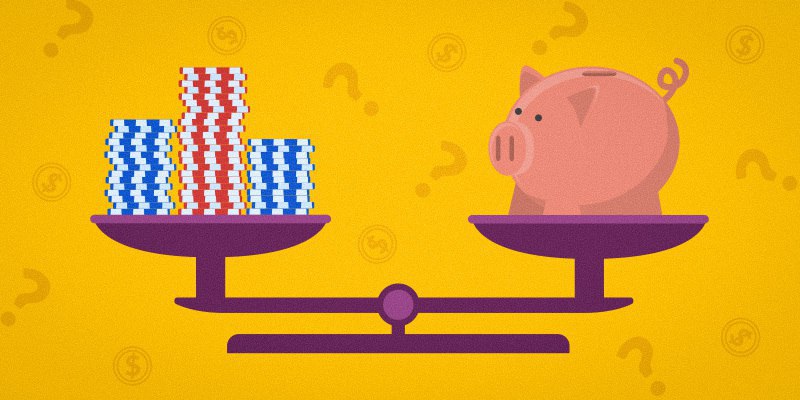Contents
Our readers are very wise and intelligent people, who always want to expand their games knowledge, of course Black Jack and Poker are always the favorite ones, but sometimes you would like to feel like the nobility of France or Italian during long winter evenings, playing baccarat. In this article the Official Golden Reel Blog would like to expand the boundaries of games and share with you all we know about baccarat.
History of the game
Some might say that this is due to its simplicity, or the benefit, since the casino's share in it is small, or that James Bond made it so. But there must be more to the play than the simplicity of the rules for it to survive the test of time and move from the 15th century to modern glamorous live dealer casinos. Let's see how it all began.
Origin - Chinese plays and rituals of Ancient Rome. Despite being one of the most popular and oldest card games in the world, the origins of baccarat are still unclear. The first mention of the game dates back to the 19th century, so all claims that the game existed before can be taken as just rumors. Yet the possible scenarios for how the play came about are fascinating. According to one of them, baccarat may have originated from other plays such as the Chinese Pai Gow, which was played using dice instead of cards. Basically, this connection is made between the name of the play Pai Gou, which translates as “dial nine,” and the fact that 9 in baccarat is the best result. But this theory cannot be confirmed by any historical facts.

Another theory is again related to the number 9, which traces the roots of the game of baccarat to ancient Rome and the ritual when the virgins threw the dice to determine their fate. If 8 or 9 fell out, this meant that the girl was waiting for the future of a priestess, 6 and 7 meant that her status as a virgin would be canceled, and all other numbers meant death for the girl, since she was obliged to enter the sea and drown. Even if the number 9 was borrowed from these plays and rituals, it is still not clear why baccarat is played with pieces instead of dice. Now let's fast forward to the 13th century when Marco Polo returned to Italy after his expeditions.
Origins in Italy. Playing cards at the tables was first described in a French manuscript dated 1330. Before the invention of the printing press, cards were not so popular simply because they did not exist. The cards either had to be drawn by hand or printed with patterned wooden stamps, a Chinese technique used in making pai gow dice that was brought to Italy by Marco Polo in the late 1290s. However, immediately after the printing press was invented, cards gained immense popularity, as they had already begun to be massively printed in packs of 78 pieces. Such decks of cards are called "Book of Devil's Pictures". New piece games have appeared, and old dice plays have been adapted for playing with pieces, which is what happened with baccarat.
While it is generally accepted that baccarat originated in France, historical evidence indicates that Italy became the game's home. The play of tarrochi was widespread in Italy in the 14th century and, although there is no connection between it and baccarat, tarrochi may have been the forerunner of all card games in general. It is believed that the Italian Felix Falgier invented the modern prototype of the play of baccarat using tarot pieces. Another popular play in Italy at the time was macao. It was played with cards, and the winner was the one with 9 points. This game is often called Italian baccarat and may have been the prototype of modern baccarat. Le her is another play that could have been the ancestor of the oldest version of baccarat, as this play also includes the principle of a fixed number of cards and winning if the player collects the highest number of points. Le her was played by two players, each receiving one piece. The cards had face values from 1 to 13, with the kings being quoted as the highest card and guaranteeing a win. Each player could exchange a card, if it is not a king, which in its essence is similar to dealing additional cards.
In the 19th century, another play had already become the alleged progenitor of baccarat. This happened after Edmond Hoyle in his works described card games in detail, where he compared baccarat with vingt-et-un, which is translated from French as "twenty-one". This, in turn, made the well-known blackjack the ancestor of baccarat. The play Hoyle described in his book was actually baccarat en banque. Already in the next edition of Hoyle's Official Rules of Card Games, published in 1911, a clear line was drawn between baccarat en banque and chemin de fer - they were marked as two different games.
Congratulations, one of the codes for $ 7 - DWGJIVKHHYC5O
Baccarat in France - Noble but Illegal Past. Baccarat is widely known as the French play, so let's take a look at the situation with baccarat in France. As legend has it, the game was first introduced to the country by soldiers who returned from Italy in the 1490s. Immediately after that, the play became popular among the French nobility. Two versions of the play- baccarat en banque and chemin de fer - were especially common in Napoleonic times. And even after Louis Philippe banned casinos in 1837, these games continued to be played in underground establishments and houses. Thus, the popularity of baccarat in Europe was retained.
Remembering that the name chemin de fer is translated as "railroad", we can make a logical assumption that the play appeared in France after 1832, when the first railways were laid in the country. However, there is no documented evidence - the name could have been coined later - so one can only assume that baccarat en banque is most likely an earlier variety of baccarat. The first mention of baccarat dates back to 1847, when Charles Van Tenac included a 13-page mathematical analysis of the game (first published) in his book Album des jeux (Album of Games).
Across the Atlantic and Pacific Oceans - Baccarat arrives in America.
If you try to trace the first appearance of baccarat in the United States, you will find articles and documents indicating that the game was first played in an American gambling establishment in 1911. This theory is held by John Scarne, Steve Forte and other respected authors and pieces play experts who have thoroughly studied the game of baccarat. However, these claims could also be easily refuted by small columns in local newspapers of the time. The first published mention of baccarat in the United States dates back to 1871. An article in the New York Times described a club on Long Branch where guests flocked to "Pharaoh, Roulette and Baccarat tables."
Another article, also from the New York Times, which was published in 1899, describes how 30 French migrants were detained for playing baccarat, proving that the play reached the United States decades earlier than originally thought. Despite this, it is generally accepted that baccarat appeared in the United States at the beginning of the 20th century. John Scarne suggests that chemin de fer was first played in New York in 1911, noting that the game was not nearly as popular as blackjack or craps, which were common among American military personnel during World War I.
Baccarat is a widespread card game, not only gambling, but also exciting. Despite its simplicity, it carries a lot of pleasure and the ability to spend evenings with benefits. And thanks to technological progress, it is not necessary to leave home somewhere to participate in tournaments, because you can play baccarat and in online casinos. The aim of the play is pretty simple. It consists in collecting a combination of cards with the number of points close to or equal to 9. Let's consider the rules of the baccarat game.
Basic rules for playing:
- Every game starts with bets. The player can play for himself, for a draw and for the banks - by placing chips in the appropriate fields.
- After the bets have been placed, the participant is dealt 2 cards.
- The essence of the game is to score 9 points.
- The value of the cards is determined at face value.
- The participant and the banker are dealt 2 pieces, and if the participant scored less than 5 points, one more card is dealt to him.
- In turn, the banker is also dealt one more piece, provided that he has less than 4 points in his hands.
- Otherwise, the participant and the banker will not receive the third card.
- The winner is the one who scored 9 points or more in the distribution.
- Bets are paid on the winning of the field on which the bet was made.
Betting:
- Player is a bet on the player's winnings. If the participant wins, then the banker takes all the bets placed on the bank and on the draw and pays out the bets that were placed on the participant in a 1: 1 ratio.
- Tie - a bet on a draw, i.e. a bet on an equal number of points for the banker and the player. If the player wins, the croupier takes all the bets that were made on the participant and on the bank and pays out the bets that were made for a draw. Ratio 8: 1
- Banker is a bet on winning the bank. If the participant wins, the croupier takes all the bets that were placed on the participant and on the draw, and pays for the bets that were placed on the bank. The ratio is 1: 1. The unusual thing about this bet is that, according to the rules of the baccarat, as a result of winning, a commission of up to 5% is taken towards the casino.
Card denominations:
According to the basic rules of the card: an ace has a face value of one point. Tens, jacks, queens and kings have a face value of 0 points. Pieces"2" through "9" have a denomination of 2 to 9 points, respectively. It should be noted that if the number of points is 10 or more, then 10 is subtracted from them.
Baccarat Strategy
To win consistently over time, you need to learn how to effectively manage your capital. You can choose one of several betting strategies, but most often two of them are used - negative and positive development.
- negative development strategy - based on the logic that you cannot consistently keep losing for too long, by the law of mathematical probability you will eventually win. The system requires you to double your bet after each loss.
- positive development strategy - based on the logic that you should start by betting one unit and keep betting one unit while you are losing. Once you win, you need to bet three units. If you keep winning, bet two units, and if you lose, go back to the one unit betting system.
Varieties of baccarat game
There are several varieties:
- “Macau” is the most difficult version, which involves two decks of 52 pieces and a small number of players who have the opportunity to individually purchase and exchange cards, while missing out on points. In this play, cards are dealt one at a time.
- "Punto Banco" is another variation of baccarat, in which the participant and the banker have the option of a third card if they have less than 6 points in their hands.
- "Victoria" is Macau with a deal of two pieces and rarely - with the presence of trump cards.
Remember, to get your winnings ASAP, before starting to play set-up the most convenient Withdrawal and Payment method in your account.
How to win baccarat
Of course, you need some experience to become a professional player, but no less important is the integrity of the casino, where you are playing. Please remember Golden Reels casino always treats players well and with respect!
Also you can find out more about Bonus codes and other useful stuff in our previous articles.
Would you like to try your hand at the game? First you need to register, how to do this you can find out in the article.
And if you already know how to play, go to the gaming site
















